Madagascar: 8 of the most stunning highlights
Thickly settled rainforests, arid rock formations, immense baobab forests and untouched sandy beaches. The landscapes of Madagascar are equal parts diverse and spectacular. All of this makes the island a haven for lovers of hiking, biking, snorkeling, diving and wildlife watching.
Paulien van der Werf
Photo: David Bruyndonckx / Unsplash
Deep in the Indian Ocean, due east of mainland Africa, you'll find the fourth largest island on the planet: Madagascar. This island is nearly the same size as France, but only has twice its population. Madagascan culture has African, Asian, and Indigenous influences. By visiting its tradtional villages and vibrant local markets, you can get to know the locals and culture of Madagascar on a deeper level. Besides its exotic beaches and lush rainforests, Madagascar is also home to rugged mountain ranges, barren chasms, vast rice fields and meandering rivers. Some of the islands landscapes, such as the spiked limestone peaks of Tsingy de Bemaraha and the mist-shrouded Ranomafana jungles, can almost feel like an entirely different planet. These environs are what make Madagascar the perfect destination for a vacation that's truly adventurous. We're sharing the 8 places every visitor needs to have seen.
1. Avenue of the Baobabs
A stroll along the Avenue of the Baobabs in western Madagascar is a surefire way to start wondering if you've suddenly shrunken in size. Baobab trees can grow up to no less than 30 meters (98 feet) in height, with their trunks boasting girths of up to 25 meters (82 feet). The baobab is also known as the "upside-down tree," due to its branches resembling roots — almost as though a giant has plucked it from the ground before flipping it on its head and planting it again. These trees line the 260-meter (284 yard) long sand road aptly named the Avenue of the Baobabs. At sunrise and sunset, their tawny trunks are bathed in an orange light that will make any visitor feel like they've landed inside a Disney movie.
 Photo: Noah Grossenbacher / Unsplash
Photo: Noah Grossenbacher / Unsplash
2. Tsingy de Bemaraha National Park
Hundreds of jagged limestone peaks nestle next to and atop one another to create the Tsingy de Bemaraha National Park. This unique landscape in Western Madagascar isn't the work of sculptors or chiselers, but rather the combined efforts of Mother Nature and millions of years worth of erosion. Fun fact: these sharp peaks are called "Tsingy," which, in the local tongue, means "that which can't be walked upon barefoot." This UNESCO World Heritage Site is better explored in walking shoes and from the bridges suspended above its chasms. Wherever you find limestone, you'll also find caves that will capture your inner spelunker's attention for hours. Your inner biologist won't be let down, either, thanks to the flora and fauna that's unique to only this region out of the entire world, such as the Tsingy-chameleon and sportive lemur.
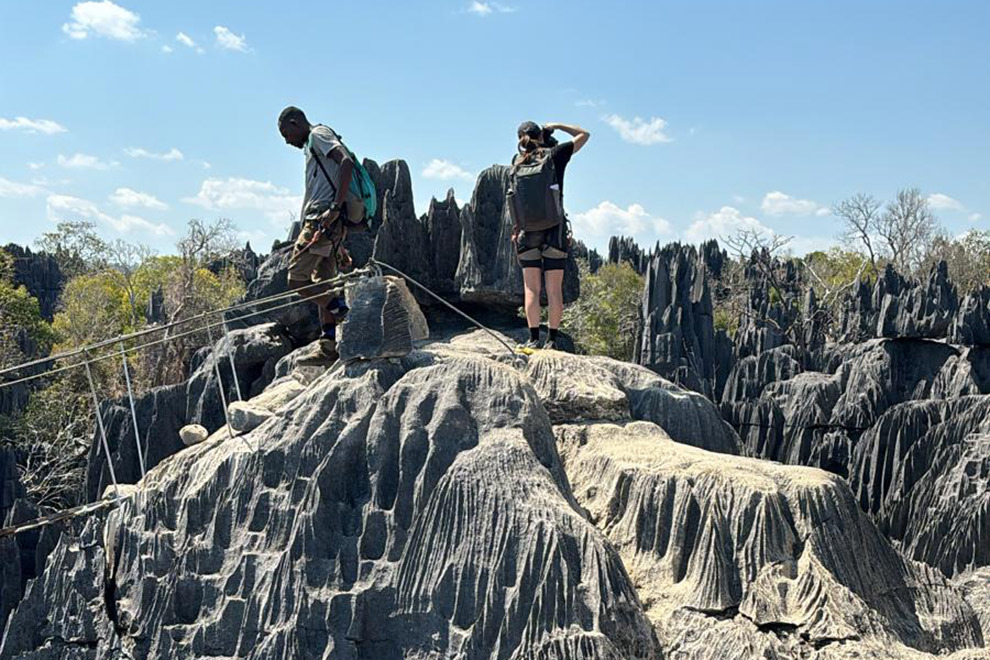 Photo: Ramartour
Photo: Ramartour
3. Andasibe-Mantadia National Park
The Andasibe-Mantadia National Park in eastern Madagascar is as green and lush as the previously discussed park is arid and dry. Here, in these vibrant tropical rainforests, you'll see gigantic ferns, fascinating orchids and endless kinds of moss. This jungle is also home to many unique species of animal. The world's largest species of lemur that's still alive today, the Indri, inhabits its trees. You'll likely hear them before you see them, because this creature's call is audible for miles from its source. At least ten other species of lemur, as well as chameleons, frogs in every imaginable color, and hundreds of birds unique to Madagascar live here. Some animals, such as the grey mouse lemur and fluorescent frog, only come out at night.
 Photo: Sandy Ravaloniaina / Unsplash
Photo: Sandy Ravaloniaina / Unsplash
4. Nosy Be & Surrounding Islands
Nosy Be and surrounding islands are a tropical paradise in northern Madagascar. Here, you'll find white sandy beaches, crystal clear waters and palm trees. Nosy Be and smaller islands such as Nosy Komba, Nosy Tanikely and Nosy Iranja are not only a must-visit for those of us who enjoy lounging by the sea with a drink in hand, but also for those in the mood for some adventure. You can find some of the best diving and snorkeling spots in Madagascar here, and swim above coral reefs with colorful fish, manta rays and whale sharks. In the protected marine reserve of Nosy, you'll even swim among turtles. You'll have no shortage of adventures on land, either. On Nosy Iranja you can see young sea turtles, and Nosy Komba is known as “lemur island." Fancy some culture? Be sure to visit the markets of Nosy Be in the small villages inland.
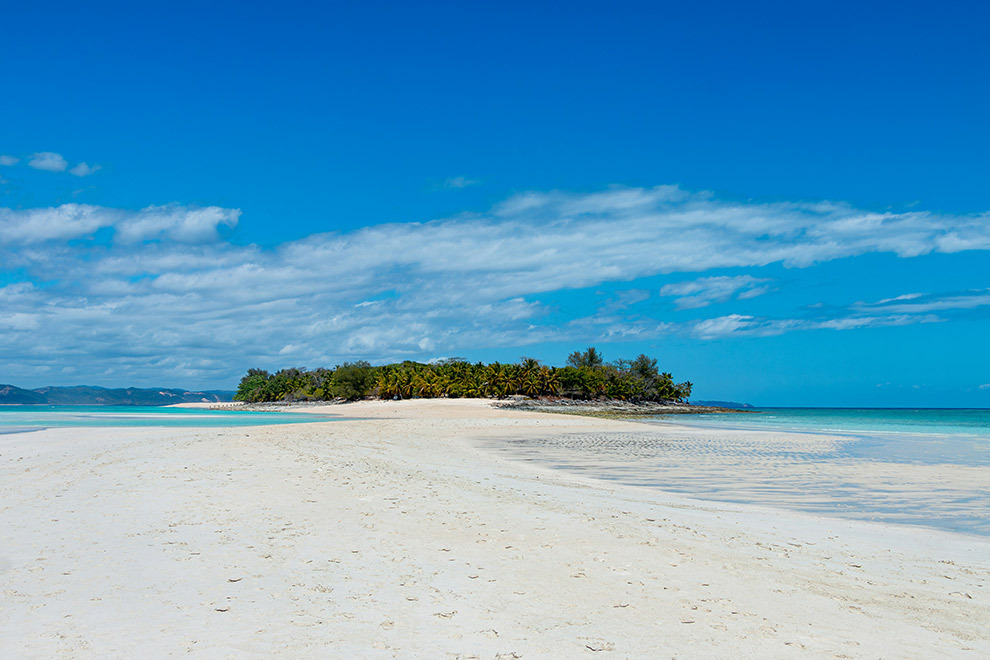 Photo: Nosa Iranja / David Bruyndonckx / Unsplash
Photo: Nosa Iranja / David Bruyndonckx / Unsplash
5. Isalo National Park
To the southwest you'll find the rugged Isalo National Park. Here, savannas stretch between jagged rock formations punctuated by deep gorges. Erosion and climate have done the landscaping here, too, with natural pools surrounded by palm trees scattered throughout the park for those looking for some serene respite. Put on your hiking boots and hike along panoramic views of gorges such as the Canyon des Singes and the Canyon des Rats. You're never alone here: birds of prey soar above you, ring-tailed lemurs lounge on the rocks, and the Madagascar blue-tongued skink (a rare species of lizard with a bright blue tongue) hides skillfully in plain sight along your path. The most popularly photographed spot in this area is the natural rock arch, La Fenêtre d'Isalo, with a hole that the low sun shines directly through at the end of the day.
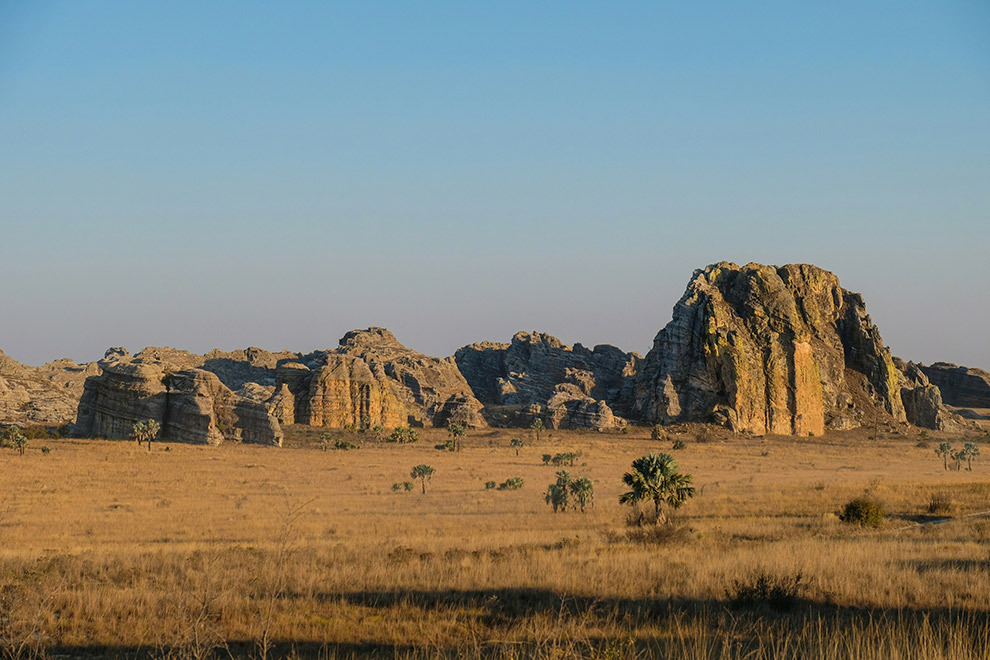 Photo: Daniele Levis Pelusi / Unsplash
Photo: Daniele Levis Pelusi / Unsplash
6. Ranomafana National Park
For those in search of rainforests bursting with biodiversity and cascading waterfalls, Ranomafana National Park is the place to be. The landscape here in the east is hilly and crossed by rivers. The banks are an oasis of green, with lush ferns and mosses covering every available surface. Exploring this area is like going on an epic treasure hunt for some of Madagascar's rarest lemurs. The golden bamboo lemur, which lives on young bamboo shoots, and the Aye-Ayes, a nocturnal lemur with extremely long fingers, for example. Huge chameleons prowl over branches, and the bright red tomato frog spies cautiously from between the leaves. After your hike, you can relax in the park's natural hot springs. "Ranomafana" means "warm water."
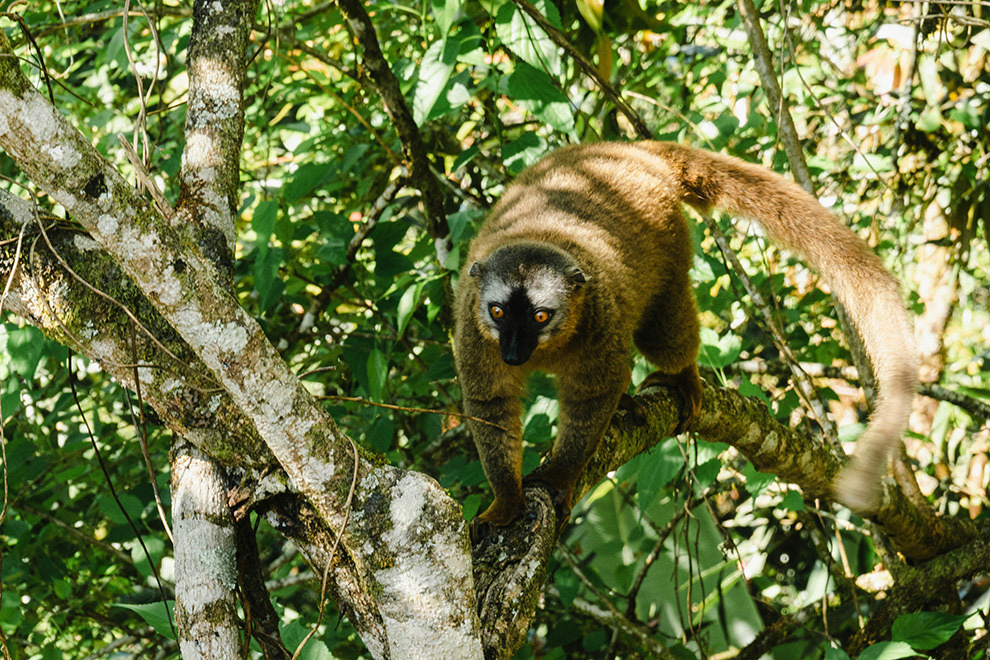 Photo: Guillermo Suarez / Unsplash
Photo: Guillermo Suarez / Unsplash
7. Tsiribihina River
The Tsiribihina River is a 300-kilometer (186 mile) long, slow-moving river in western Madagascar. For an unforgettable adventure, board a traditional log boat (a type of large canoe) for a 3-day cruise downstream. Your luggage, including food and drinks for three days, will be taken with you on board. The waters are calm and there's no paddling necessary unless you want to help the staff out. Spot drinking zebu and birds along the banks. Wave to the locals and admire baobab forests and high cliffs. At the end of the day, set up camp on the river banks and enjoy a meal by campfire, then go to sleep in a tent under a clear, starry sky. For 2.5 days, this is your life, with a backdrop of ever-changing scenery.
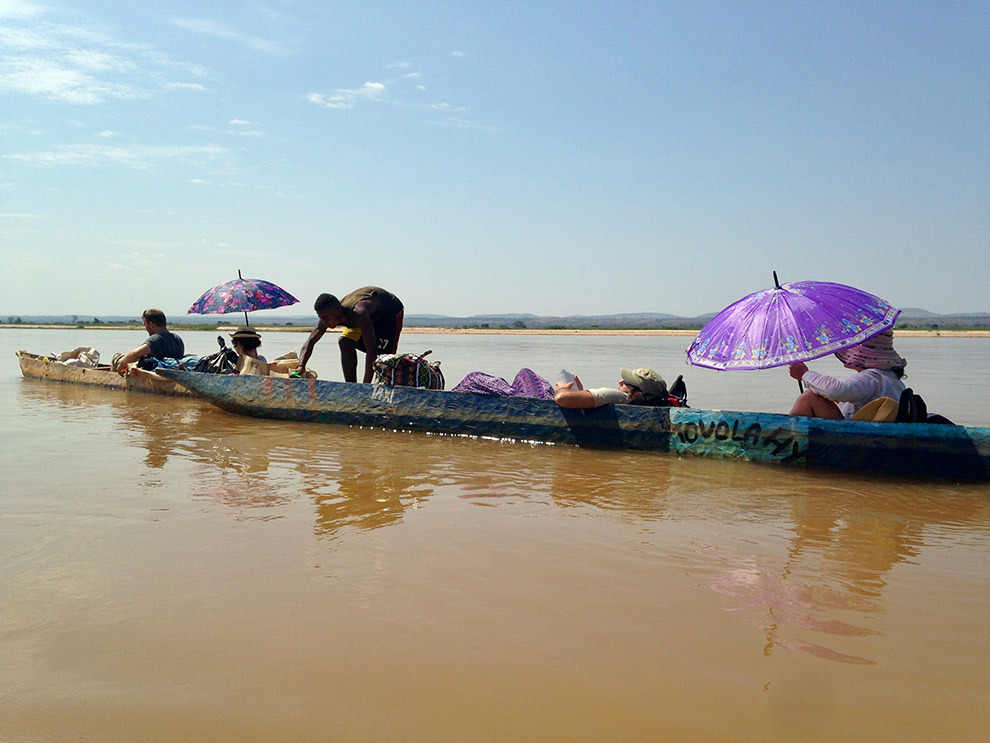 Photo: Antonio Sánchez / Unsplash
Photo: Antonio Sánchez / Unsplash
8. Île Sainte-Marie
Want to end your trip with a tropical surprise? Then Île Sainte-Marie, also known as Nosy Boraha, is the place to be. This 57-kilometer (35 mile) long island boasts vast, white sandy beaches lined with palm trees and thatched huts. You'll also find small, authentic villages with friendly locals and, in the north, unspoiled nature. In short: the perfect combination of nature, culture and idyllic beaches, best discovered by bicycle. The strait between Île Sainte-Marie and the mainland is one of the best places in Madagascar to spot whales. With snorkeling or diving equipment, you can also explore the island's vibrant underwater world on your own. Pointe Albrand, for example, is a great place to spot gray sharks, rays and barracudas.
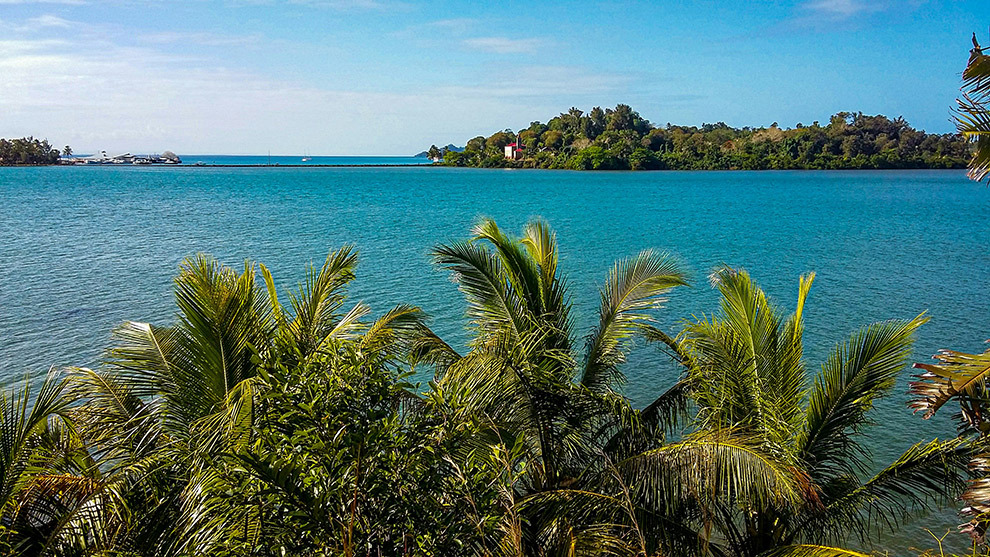 Photo: Ony Tiana Olive RAZAFIMAHARAVO / Unsplash
Photo: Ony Tiana Olive RAZAFIMAHARAVO / Unsplash
Enjoy a carefree adventure with Ramartour
With the family-owned business Ramatour, you can book custom-made trips with great value for high quality adventures. They know all the most beautiful nature areas, the most unique villages, and the best accomodations in Madagascar. They're working to develop the local tourist industry sustainably. Check out their website for examples of the trips they can plan for you.
This blog was written in collaboration with Ramartour. Visit Ramartour's website for more information and to discover all the trips they offer.
Create your own blog
Easily add stories to your diary in our online editor or app
Add your images and choose your pages layouts
Share your journey in real time without the fuss!